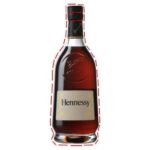News Topics
I. [WIPO] Notice of Adjustment to PCT International Phase Fees in 2025
II. [TW] Early and Comprehensive Trademark Layout Is Strongly Advised
IV. [HK] Hong Kong and WIPO Sign MOU on WIPO Lex-Judgments Database
V. [TW] TIPO Launches “Image-Based Search System for Domestic Design Patents (Beta)”
I. Notice of Adjustment to PCT International Phase Fees in 2025
According to the announcement published by the World Intellectual Property Organization (WIPO), effective from July 1, 2025, the international filing fee and the handling fee for the PCT Demand (request for international preliminary examination) submitted to the China National Intellectual Property Administration (CNIPA) will be charged based on the revised official fee schedule as outlined below.
| Description | Official Fee
(RMB) |
Official Fee
(USD) |
| (1) International filing fee | 11,620 | 1,660 |
| (2) International filing fee per sheet over 30 | 130 | 19 |
| (3) E-filing Reductions (PDF Format) | 1,750 | 250 |
| (4) E-filing Reductions (XML Format) | 2,620 | 375 |
| (5) Handling fee collected on behalf of the International Bureau | 1,750 | 250 |
In addition to the above-mentioned fees, other official fees independently charged by the CNIPA, such as the search fee, will remain unchanged.
Jason Hung
Patent Attorney of RichIP Group
II. Early and Comprehensive Trademark Layout Is Strongly Advised
Content:
Trademark systems vary from country to country. Roughly 80% of nations adopt the first-to-file principle, including China, Japan, Korea, the EU, and Taiwan. A few countries, such as the United States follow the “first-to-use” principle which gives significant weight to actual use of trademark or market recognition (well-known) in determining trademark rights. Consequently, filing trademarks as soon as possible is the most effective way to minimize the risk of disputes in most countries.
A well-known example is Ryohin Keikaku Co., Ltd. (hereinafter “Japan MUJI”) and its trademark dispute in China for the mark of “” belonging to Class 24. Although Japan MUJI has began trademark application for the mark of “” in China from1999, covering Classes 3 (cosmetics), 9 (calculator), 16 (stationery), 20 (furniture), 21 (household utensils), 25 (clothing), 26 (accessories), 35 (retail services), and 41 (publishing and educational services). However, the trademark application did not include Class 24 (textiles, towels, bed sheets, and quilts).
In 2001, Hainan Nanhua Industrial & Trade Co. applied for and obtained trademark registration for the mark of “” in Class 24, which was later assigned (in 2004) to Beijing Cottonfield Textile Co., Ltd (hereinafter “Beijing Cottonfield”). After publication of the trademark, Japan MUJI filed an opposition, but during a series of legal battles and proceedings the Supreme People’s Court of China finally held that Japan MUJI’s reputation in China at the time was limited, and affirmed the validity of Beijing Cottonfield’s trademark registration based on the first-to-file rule.
After that, Beijing Cottonfield discovered that Japan MUJI had been using the mark of “無印良品” on products such as blankets, bed covers, and towels, and filed an infringement lawsuit. After the first and second instances, the Beijing High People’s Court upheld the original judgment that Japan MUJI indeed infringed the registered trademark. As a result, although Japan MUJI could continue using “MUJI” in English in goods belong to Class 24, it was prohibited from using the Chinese name “無印良品” in that class.
Afterward, Japan MUJI continued to file new trademark applications for the mark of “無印良品” in Class 24 and attempted to invalidate Beijing Cottonfield’s trademark registration by claiming bad-faith registration. However, Japan MUJI losing the first and second-instance administrative litigation, and its petition for retrial was dismissed by the Supreme People’s Court in June 2025.
This case points out the importance of a comprehensive trademark layout, especially for those running business internationally. In the countries under first-to-file principle, companies cannot rely solely on their global reputation to extend the trademark rights to cover undesignated classes, especially when the evidence may not be sufficient to prove that the mark was already well known “at that time” and “in that jurisdiction.” Once a key class has been missed for trademark registration, extra efforts in litigation, acquisition, or cross-licensing are often necessary to extend commercial use of the same mark to the missed class.
From a practical standpoint, we suggest conducting a preliminary search to evaluate the likelihood of rejection, followed by trademark applications covering current core goods and services based on the Nice Classification. Classes with a high potential of future expansion can be reserved for subsequent filings. As the business grows, a “variant-symbol” approach may be adopted—registering variants such as abbreviations, nicknames, phonetic transliterations, or localized names (for instance, “麥當當(a Chinese nickname for McDonald’s),” “珍煮母 (an abbreviated Chinese rendering of TRUEDAN),” or “史塔巴克斯 (a localized transliteration of STARBUCKS)” as defensive marks)—to strategically strengthen protection and avoid unnecessary costs arising from future trademark disputes.
References
Chun-Wei Lo
Patent and Trademark Counselor of RichIP Group
III. TIPO Revised “Examination Guidelines for Non-Traditional Trademarks” — Effective Date: August 1, 2025
Content:
Before the previous amendment to Trademark Act, Paragraph 4 of Article 30 provided that registration shall not be permitted unless a disclaimer of non-exclusive use for functional portions of a trademark design is made. To avoid that functional portions of a trademark design affects the overall assessment of likelihood of confusion, it is now stipulated that registration shall not be permitted unless functional portions of a trademark design are depicted in dashed lines. For trademarks containing functional portions that cannot be represented in dashed lines (such as non-visual marks including sound or scent marks), the applicant must expressly declare that such portions are not part of the trademark instead.
To be in line with the amendment, the “Examination Guidelines for Non-Traditional Trademarks” have been revised accordingly. The key points of the revision are summarized as follows:
- Specifying the principles for handling functional portions within a trademark design;
- Specifying that when dashed lines are used in the trademark representation, such use shall be explained in the trademark description;
- Specifying that the main distinctive features protected under non-traditional trademarks (e.g., color, three-dimensional shape, motion, hologram, and sound) are different from the two-dimensional features of traditional trademarks (e.g., words, figures, and symbols);
- Specifying that the applicant shall provide a trademark description explaining the three-dimensional shape to ensure clarity in the three-dimensional form of a trademark; and
- Providing recent cases and revising the examples for trademark descriptions as references to meet practical examination needs.
Example:
Trademark Description:

“This mark is a three-dimensional trademark exhibiting the exterior shape of a product packaging container, as shown in the trademark design. It is composed of a three-dimensional bottle, a three-dimensional cap and a word . The cap and neck are covered with a black seal. The top of the cap bears the word of ‘HENNESSY’ and a logo of ‘a hand holding an axe’. The neck seal is printed with the word of ‘HENNESSY’ in slanted and evenly spaced lettering. The front of the bottle features an embossed logo of ‘a hand holding an axe’ and a label bearing the word of ‘HENNESSY’ with gold floral patterns. The lower portion of the bottle is slightly concave inward and then connect to an outwardly protruding base. The portions shown by dashed lines—the cap and bottle shape—are not part of the trademark.”
References
Chun-Wei Lo
Patent and Trademark Counselor of RichIP Group
IV. Hong Kong and WIPO Sign MOU on WIPO Lex-Judgments Database
Hong Kong and WIPO signed a Memorandum of Understanding (MoU) concerning the “WIPO Lex Judgments” database on September 1, 2025, with the aim of enhancing information sharing, with a view to jointly building a more connected and informative global intellectual property community.
The WIPO Lex Judgments database provides free, open access to leading judicial decisions relating to IP from around the world, which currently includes more than 2,200 judgments from over 40 jurisdictions. Under this MoU, Hong Kong will contribute landmark IP judgments to the WIPO Lex Judgments database, thereby allowing judges, IP practitioners, policymakers and researchers around the world to better understand and engage with Hong Kong’s IP-related judicial judgments, while at the same time showcasing the quality of Hong Kong’s jurisprudence.
At the signing ceremony, the Financial Secretary of Hong Kong, Mr. Paul Chan, remarked that Hong Kong’s participation in the database carries special significance. He further emphasized that Hong Kong, the only jurisdiction in China that practices the common law system and operates in both Chinese and English, has earned broad international recognition for its protection of intellectual property rights. The city has become a trusted venue for resolving IP disputes involving both Chinese and international parties, and its judicial decisions serve as valuable references for the global legal community.
This signing marks a significant step in strengthening Hong Kong’s collaboration with the WIPO. It is expected to enhance the transparency of Hong Kong’s IP regime on a global scale and reinforce the city’s role in the international exchange of judicial precedents. Moreover, it may further boost the confidence of international enterprises and IP owners in investing and conducting innovation activities in Hong Kong.
References:https://www.info.gov.hk/gia/general/202509/01/P2025090100454.htm?fontSize=1
Jason Hung
Patent Attorney of RichIP Group
V. TIPO Launches “Image-Based Search System for Domestic Design Patents (Beta)”
Taiwan Intellectual Property Office (TIPO) has launched an “Image-Based Search system for Domestic Design Patents (Beta)” from 2025 to enhance the efficiency and convenience of searching design patents. The system includes design patent cases which have published since 2013, and enable users to quickly identify and search out similar designs by intelligent image recognition approach. This new approach breaks through the limitation of traditional text-based searches and provides a more intuitive and precise search mode, which is useful for research, creation and management of rights.
Key features of the new search system are shown as follows:
Image Upload and Comparison: when users upload an image, the system automatically detects and highlights the design area with a red frame.
Partial Image Search: users can crop specific portions of an image and search for the cropped portions.
Integration with LOC Classification: the system supports image searches combined with International Classification for Industrial Designs (LOC) to search for specific fields quickly.
Multiple Filtering Options: users can further filter the search results by inventor, applicant, publication year, and LOC classification, etc.
The system can save time on searching prior design patents and enhance the precision of searching as compared with traditional text searching, and therefore TIPO encourage people to utilize it more.
References
Hyperlink:TIPO
Zhijun Luo
Paralegal of RichIP Group

